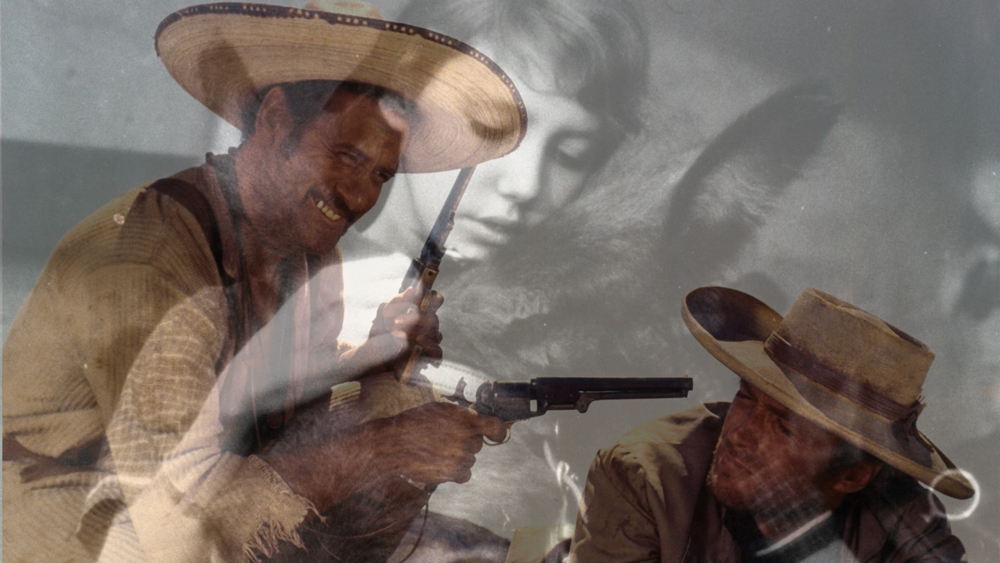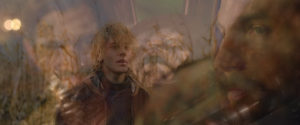
The later rounds of the Tournament of Films here at Dim the House Lights naturally present a difficult choice. By now, we’re only talking about great movies that got to this round because a previous writer decided they were better than some other, probably equally great movie. But this essay seems harder still because the films in question are more than great. The Good, The Bad and the Ugly and Au Hasard Balthazar each represent a platonic ideal for movies of their respective genres. It’s nigh impossible to choose, but I must. Michelle said she’d hurt me if I didn’t choose the sad donkey movie.
And I will choose the sad donkey movie (that’s Balthazar, for those unfamiliar). Robert Bresson’s greatest asset as a filmmaker is his incredible ability to make his brand Catholic nihilism seem light on its feet. That’s true here too, which is no easy feat in a film about a donkey suffering like he’s Christ or Sisyphus. Those who don’t know Bresson going in might find Balthazar surprisingly digestible, what with its 95 minute runtime and focus on events rather than quiet contemplation. But that is not to say this film isn’t complex, rather that the focus is often on the cinematic rather than the novelistic, privileging process over pure thought. Watch the donkey suffer. Consider the donkey’s suffering later.
As far as affect, well, I feel for this donkey throughout. Some asshole kid lights his tail on fire and I’m not sure that’s even the worst of it for old Balthazar. As Balthazar moves from owner to owner–even getting involved in a circus where he discovers a talent for mathematics–his original owner, Marie, gets mixed up in an abusive relationship (with the mortorbike dude who lit the ass on fire, natch) and suffers in parallel to her old donkey. It is a testament to Balthazar’s power that the suffering of Marie is never more emotionally affecting than that of Balthazar. Suffering transcends species lines for Bresson, who continually peppers Balthazar’s miserable journey with likewise miserable human beings, who suffer at the hands of each other. Yet suffering, while a horrible fact of life to Balthazar and Marie, is a tool to other humans. When Marie’s mother tells her her father is suffering out of love for them, Marie responds that her father uses his suffering to impose on his family. She flees back into the arms of her asshole boyfriend, as there is no way out. Balthazar’s suffering ends when he finally dies after a lifetime of being kicked.
Then there’s The Good, the Bad and the Ugly, the Spaghetti Western to a large part of American moviegoers for good reason. As with Balthazar, Leone’s film flies by despite its circumstances–here a 3 hour runtime rather than heavy themes of existential passion. Perhaps that’s to be more expected here, in a film frequently punctuated by explosions and gunfire, but there’s a special fleetness to the editing work that cuts between three interconnected but often separated characters. That, along with the iconic score, is the best part of this film. And nowhere does it contribute to indelible cinema more than in a single cut transitioning from a gunfight in a bubble bath to a young, very pretty Clint Eastwood petting a very small (and I mean super small) kitten. On their own, these images are among my favorites in any movie, but together the juxtaposition better explores the momentary comforts of an exceptionally violent world. In Leone’s film, brief moments of joy explode into violence, as Tuco’s bubble bath leads to a gunfight, so too is Eastwood’s feline rendezvous followed quickly by a murder.
There’s plenty of suffering to go around here, too, especially when Clint Eastwood is forced to walk one hundred miles of desert with no water, his skin burning and cracking in the sun. But the difference between the suffering here and that in Balthazar is the presence of loud, constant commentary on it. When Eastwood’s character suffers in the desert, he is being led around by Tuco who laughs at his pain. As such, his pain never becomes more than a means to an end, a piece of a plot filled with deceit. Eastwood avoids death by uncovering information he knows Tuco wants, information that will propel the rest of the film forward. The Good, the Bad and the Ugly never becomes dour, putting being an action movie first over all other possible meanings.
But for however much joy I feel watching this, I can’t say the excitement with which I experience The Good, the Bad and the Ugly is equal to the constant ache I feel watching Au Hasard Balthazar. Emotionally and formally, it represents the greater feat, despite not having anything as awesome as Clint Eastwood shooting Lee Van Cleef into his grave.
The winner: Au hasard Balthazar
—
The Good, the Bad and the Ugly; directed by Sergio Leone; written by Agenorre Incrocce, Furio Scarpelli, Sergio Leone, Luciano Vincenzoni, Sergio Donati, Mickey Knox (English version); starring Clint Eastwood, Lee Van Cleef, Eli Wallach; 177 minutes.
Au hasard Balthazar; directed by Robert Bresson; written by Robert Bresson; starring Anne Wiazemsky, Walter Green, and François Lafarge; 95 minutes.



 Derek
Derek
 Isabelle
Isabelle